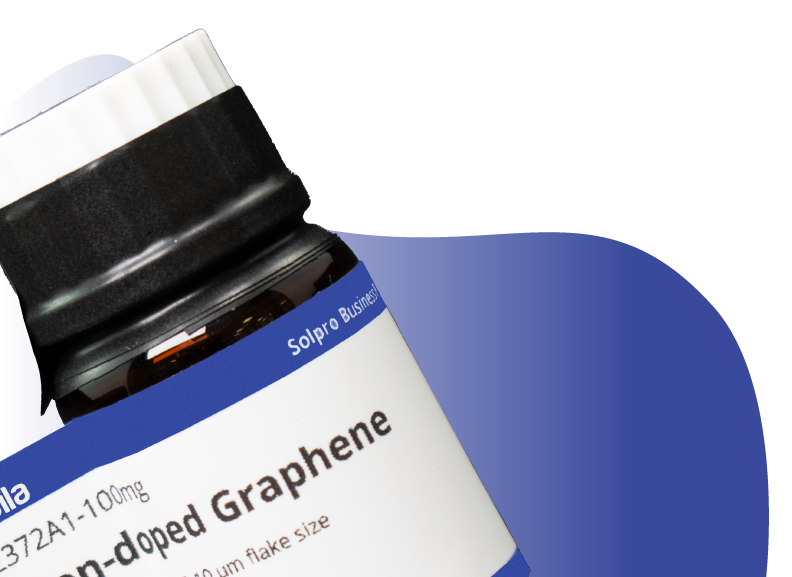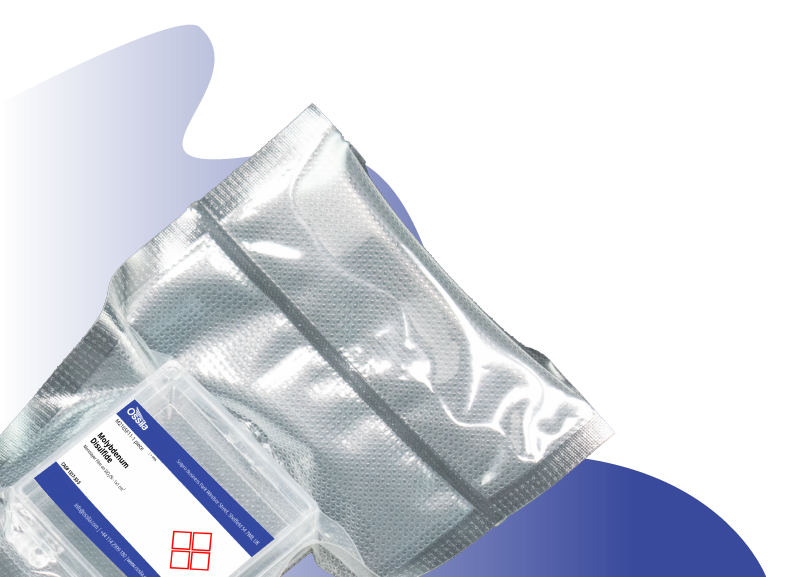Graphene Nanoplatelet Powder
CAS Number 1034343-98-0
2D Materials, Anode Active Materials, Battery Materials, Graphene Materials, Low Dimensional Materials, MaterialsPopular, High Purity Research Material
Graphene powder for applications in sensors, flexible and wearable electronics, and nanocomposites reinforcement
Overview | Product Information | Related Products | Technical Support
Graphene nanoplatelets (GNPs; CAS number 1034343-98-0) are a mixture of single layer graphene, few-layer graphene (≤10 layers), and nanostructured graphite. They can be produced in large-scale production with low costs by following the liquid phase exfoliation procedure.
Graphene nanoplatelets exhibit exciting properties such as planar structure, lightweight, mechanical toughness, and remarkable electrical and thermal conductivity. GNPs find applications in flexible and wearable electronics, motion and structural sensors, and reinforced bio-nanocomposites. Graphene nanoplatelets are also added as component in a mixture to improve composites tensile strength, stiffness, corrosion resistance, abrasion resistance, and anti-static electricity and lubricant properties.
High Purity
>99.9% purity graphene nanoplatelets
Worldwide Shipping
Quick and reliable shipping
Versatile
Wide range of applications
Low price
Affordable graphene nanoplatelet powder
General Information
| CAS Number | 1034343-98-0 |
|---|---|
| Chemical Formula | CxHy |
| Recommended Solvents | H2O, N-Methyl-2-pyrrolidone (NMP), Ethanol, IPA, Ethylene Glycol |
| Synonyms | Single-layer graphene, graphene, graphene monolayer, graphene nanoplatelets |
| Classification or Family | 2D semiconducting materials, Carbon nanomaterials, Graphene Oxide, Graphene and Graphene Oxide, Nanomaterials, Polycyclic aromatic hydrocarbons, OLEDs, Organic photovoltaics (OPV), Organic electronics |
| Color | Black to grey |
Graphene Powders
| Product Code | M2392A1 | M2392B1 | M2392C1 |
|---|---|---|---|
| Size | ~ 1.5 μm | ~ 7 μm | ~18 μm |
| Layer Thickness | ~ 3 nm | ~ 5 nm | ~ 5 nm |
| Single Layer Ratio | 99.8% | 99.8% | N/A |
| Specific Surface Area (m2/g) | 800 | 170 | 170 |
| Conductivity (s/m) | 1500 – 2000 | 1100 – 1600 | 1100 – 1600 |
| Purity | >99.9% | >99.9% | >99.9% |
| Packaging Information | Light-resistant bottle | Light-resistant bottle | Light-resistant bottle |
MSDS Documents
Graphene Nanoplatelets MSDS Sheet
Pricing Table
| Product Code | Size | Weight | Price |
|---|---|---|---|
| M2392A1 | ~ 1.5 μm | 25 g | £200 |
| M2392A1 | ~ 1.5 μm | 50 g | £330 |
| M2392B1 | ~ 7 μm | 25 g | £200 |
| M2392B1 | ~ 7 μm | 50 g | £330 |
| M2392C1 | ~ 18 μm | 25 g | £200 |
| M2392C1 | ~ 18 μm | 50 g | £330 |
*For larger orders please contact us to discuss prices
More on Graphene Nanoplatelets
Graphene is an extremely popular material within scientific research. When a simple method of exfoliating single layers of graphene from bulk graphite was discovered in 2004, it marked the start of the 2D materials era.
The properties of single layers were found to be drastically different from those of the bulk material. Many of these properties exceeded those of any known material. Today, graphene is still proving to be one of the most exciting materials around. Since the start of 2018, there have already been 27,000 publications on graphene worldwide.
Dispersion Guide
Graphene is hydrophobic, making it difficult to create stable dispersions in most solvents. At Ossila, we have found that the most stable dispersions can be produced using the following recipe:
- Weigh out desired amount of graphene powder, can go up to 0.1 mg.ml-1.
- Add 3:2 ratio of isopropyl alcohol to ethylene glycol.
- Shake vigorously to break up material.
- A 2-hour treatment in an ultrasonic bath will homogeneously disperse the material (40 kHz, 100 W ultrasonic bath).
References
- Measurement of the Elastic Properties and Intrinsic Strength of Monolayer Graphene, C. Lee et al., Science, 18 (321):5887, 385-388 (2008); DOI: 10.1126/science.1157996.
- The rise of graphene, A. K. Geim et al., Nat. Mater., 6, 183 - 191 (2007); doi:10.1038/nmat1849.
- Graphene-based composite materials, S. Stankovich et al., nature, 442, 282-286 (2006); doi:10.1038/nature04969.
Related Products
We stock a wide range of 2D materials available to purchase online. Please contact us if you cannot find what you are looking for.



